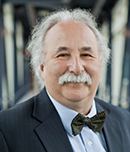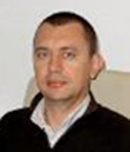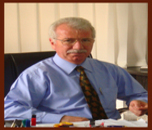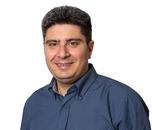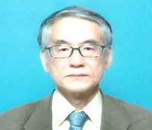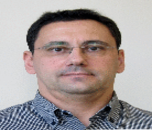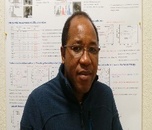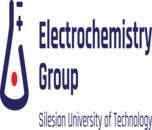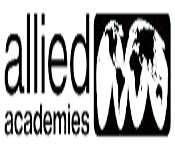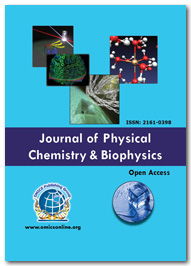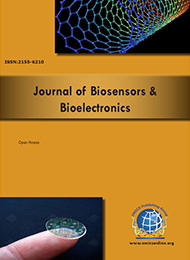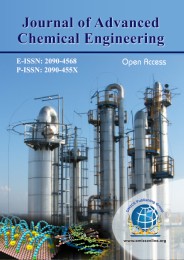Theme: Unleashing various aspects and recent advancements in Electrochemistry
ElectroChemistry 2017
Track 1: Advances in Electrochemistry
Electrochemistry is the branch of chemistry that compromise with the relations between electrical and chemical phenomena. Electrochemistry binds with Electrolytic processes the Reactions in which chemical changes occur on the passage of an electrical current, Galvanic or Voltaic processes a chemical reaction that result in the production of electrical energy. Electrochemical cell often consists of two electronic conductors called as electrodes and an ionic conductor called as electrolyte. The Leclanche cell is a battery the battery contained a conducting solution (electrolyte) of ammonium chloride, a cathode (positive terminal) of carbon, a depolarizer of manganese dioxide, and an anode (negative terminal) of zinc. The chemistry of this cell was posterior successfully adapted to manufacture a dry cell. Alkaline cell are a type of primary battery reliant upon the reaction between zinc and manganese oxide. Electrolysis is a procedure that uses a direct electric current. Electrolysis is commercially important as a step in the separation of elements from consistently occurring sources such as metals using an electrolytic cell. The voltage that is necessary for electrolysis to occur is called the decomposition potential.
Related Chemistry Conferences | Chemistry Meetings | Electrochemistry
6th international conference on Medicinal Chemistry & Computer Aided Drug Designing, December 11-13, 2017 Philadelphia, USA; 3rd International Conference on Organic Chemistry, July 24-26, 2017 Chicago, Illinois, USA; 2nd international conference on Clinical Chemistry, December 11-13, 2017 Jackson Ville, USA; 2nd international conference on Applied Chemistry, October 16-17, 2017 Paris, France; 4th European Chemistry Congress, May 11-13, 2017 Barcelona, Spain; 19th International Conference on Medicinal Chemistry, January 19 - 20, 2017, London, United Kingdom; 19th International Conference on Clinical Chemistry and Laboratory Medicine, January 30 - 31, 2017, Dubai, UAE; 19th International Conference on Chemometrics in Analytical Chemistry, February 7 - 8, 2017, Mumbai, India; 19th International Conference on Polymers and Organic Chemistry, March 29 - 30, 2017, Paris, France; 19th International Conference on Industrial Chemistry and Chemical Engineering, September 28 - 29, 2017, Istanbul, Turkey.
Related Societies:
International society of Electrochemistry, Switzerland, Chinese Society of Electrochemistry, China, Electrochemical society of Japan, Japan, Korean Electrochemical Society, Korea, The Electrochemical society, USA, German Chemical society, Germany, Bio electrochemical society, France, American Chemical society, USA
Track 2: Theoretical and Computational Electrochemistry
Computational Electrochemistry is the advancement of mathematical models for the chemical and physical processes in batteries and fuel cells with the mechanism to investigate them with the help of computer simulations and mathematical study. Faradays law is a law stating that the extent of any substance deposited or liberated during electrolysis is proportional to the quantity of electric charge passed and to the comparable density of the substance. A thermodynamic portion equal to the enthalpy (of a structure or process) minus the product of the entropy and the outright temperature is called as Gibbs free energy. In electrochemistry, the Nernst equation is an equation that discloses the reduction potential of a half-cell (or the full voltage, i.e. the electromotive force, of the full cell) at any fleck in time to the standard electrode potential, temperature, action, and reaction quotient of the underlying reactions. Electrical conductivity is the amplification of a material's ability to allow the transport of an electric charge. Electrochemical synthesis in chemistry is the organization of chemical compounds in an electrochemical cell. The main advantage of electro synthesis over an ordinary redox reaction is evasion of the potential wasteful other half-reaction and the ability to precisely tune the required potential.
Related Chemistry Conferences | Chemistry Meetings | Electrochemistry
2nd International Conference and Exhibition on Materials Chemistry, July 13-14, 2017 Berlin, Germany; 3rd International Conference and Exhibition on Advances in HPLC & Chromatography Techniques, July 10-11, 2017 Berlin, Germany; 2nd International Conference on Polymer Chemistry, November 06-08, 2017 Chicago, USA; 2nd International Conference on Pharmaceutical Chemistry, October 05-07, 2017 Valencia, Spain; 3rd World Chemistry Conference, May 22-24, 2017 Chicago, USA; 46th World Chemistry Congress, July 9 to 14, 2017, São Paulo – Brazil; 19th International Conference on Physical Chemistry, March 9 - 10, 2017, Miami, USA; 19th International Conference on Surface and Interface of Materials, June 11 - 12, 2017, Copenhagen, Denmark; 19th International Conference on Photochemistry, March 14 - 15, 2017, London, United Kingdom; 19th International Conference on Applied Chemistry, January 13 - 14, 2017, Zurich, Switzerland.
Related Societies:
Society of Chemical Industry, UK, Royal Society of Chemistry, UK, European federation of Corrosion, Europe, Biochemical society, London, Hungarian Chemical society, Hungary Swedish chemical society, Sweden, American Institute of Chemists, USA, Danish chemical society, Denmark
Track 3: Electro analytical Chemistry
Electroanalytical methods are a class of facility in analytical chemistry, which study an analyte by calibrating the potential (volts) and/or power (amperes) in an electrochemical cell containing the analyte. The three main divisions are potentiometry (the difference in electrode potentials is calibrated), coulometry (the cell's current is measured over time), and voltammetry (the cell's current is measured while strongly altering the cell's potential). A sensor is equipment that detects and reacts to some type of input from the physical environment. A biosensor is an analytical apparature, used for the exposure of an analyte that combines a biological compound with a physicochemical detector. The sensitive biological components e.g. tissue, microorganisms, organelles, cell receptors, enzymes, antibodies, nucleic acids, etc. is a biologically borrowed material or biomimetic component that interacts binds or recognizes) with the analyte under study. The conductometric transducer is a miniature two-electrode device designed to calibrate the conductivity of the thin electrolyte layer adjacent to the electrode surface.
Related Chemistry Conferences | Chemistry Meetings | Electrochemistry
2nd European Organic Chemistry Congress, March 2-3, 2017 Amsterdam, Netherlands; 2nd International Conference on Stereochemistry, August 21-22, 2017 Las Vegas, USA; 2nd International Conference on Biochemistry, Sep 11-13, 2017 Melbourne, Australia; 2nd International Conference on Histochemistry, September 25-26, 2017 Jackson Ville, USA; 4th European Chemistry Congress, May 11-13, 2017 Barcelona, Spain; 19th International Conference on Medicinal Chemistry, January 19 - 20, 2017, London, United Kingdom; 19th International Conference on Clinical Chemistry and Laboratory Medicine, January 30 - 31, 2017, Dubai, UAE; 19th International Conference on Chemometrics in Analytical Chemistry, February 7 - 8, 2017, Mumbai, India; 19th International Conference on Polymers and Organic Chemistry, March 29 - 30, 2017, Paris, France; 19th International Conference on Industrial Chemistry and Chemical Engineering, September 28 - 29, 2017, Istanbul, Turkey.
Related Societies:
International society of Electrochemistry, Switzerland, Chinese Society of Electrochemistry, China, Electrochemical society of Japan, Japan, Korean Electrochemical Society, Korea, The Electrochemical society, USA, German Chemical society, Germany, Bio electrochemical society, France, American Chemical society, USA
Track 4: Electrochemical Energy Conversion and Storage
The most important function of electrochemistry is the storage and conversion of energy. Galvanic cell converts chemical energy to work; equivalently, an electrolytic cell converts electrical work into chemical free energy. Appliances that carry out these conversions are known as batteries. In ordinary batteries the chemical elements are contained within the device itself. If the reactants are endowed from an external source as they are consumed, the device is called a fuel cell. A secondary battery is able of being recharged; its electrode reactions can proceed in either direction. At the time of charging, electrical work is done on the cell to provide the free energy needed to force the reaction in the non-spontaneous direction. A primary battery, as exemplified by a normal flashlight battery which cannot be recharged with any efficiency, so the bulk of energy it can deliver is limited to that obtainable from the reactants that were placed in it at the time of production. Lithium batteries are the batteries that have lithium as an anode. They stand apart from other batteries in their high charge quantity (long life) and high cost per unit. Depending on the design and chemical compounds used, lithium cells can generate voltages from 1.5 V comparable to a zinc–carbon or alkaline battery to about 3.7 V. A flow battery, or redox flow battery is a type of rechargeable battery where rechargeability is provided by two chemical elements dissolved in liquids contained within the system and separated by a membrane.
Related Chemistry Conferences | Chemistry Meetings | Electrochemistry
6th international conference on Medicinal Chemistry & Computer Aided Drug Designing, December 11-13, 2017 Philadelphia, USA; 3rd International Conference on Organic Chemistry, July 24-26, 2017 Chicago, Illinois, USA; 2nd international conference on Clinical Chemistry, December 11-13, 2017 Jackson Ville, USA; 2nd international conference on Applied Chemistry, October 16-17, 2017 Paris, France; 4th European Chemistry Congress, May 11-13, 2017 Barcelona, Spain; 19th International Conference on Medicinal Chemistry, January 19 - 20, 2017, London, United Kingdom; 19th International Conference on Clinical Chemistry and Laboratory Medicine, January 30 - 31, 2017, Dubai, UAE; 19th International Conference on Chemometrics in Analytical Chemistry, February 7 - 8, 2017, Mumbai, India; 19th International Conference on Polymers and Organic Chemistry, March 29 - 30, 2017, Paris, France; 19th International Conference on Industrial Chemistry and Chemical Engineering, September 28 - 29, 2017, Istanbul, Turkey.
Related Societies:
Society of Chemical Industry, UK, Royal Society of Chemistry, UK, European federation of Corrosion, Europe, Biochemical society, London, Hungarian Chemical society, Hungary Swedish chemical society, Sweden, American Institute of Chemists, USA, Danish chemical society, Denmark
Track 5: Bio electrochemistry
Bio-electrochemistry is a chapter of electrochemistry and biophysical chemistry concerned with electrophysiological subjects like cell electron-proton transport, cell membrane potentials and electrode reactions of redox enzymes. Biochip is a microchip designed or contracted to function in a biological environment, mainly inside a living organism. Bioassay is a calibration of the concentration or potency of a substance by its effect on living cells or tissues. A biosensor is analytical equipment, used for the detection of an analyte that combines a biological element with a physicochemical detector. Electroporation is the action or process of introducing DNA or chromosomes into bacteria or other cells using a pulse of current to open the pores in the cell membranes briefly. A microbial fuel cell or biological fuel cell is a bio-electrochemical system that drives a current by using bacteria and mimicking bacterial interactions found in nature.
Related Chemistry Conferences | Chemistry Meetings | Electrochemistry
2nd International Conference and Exhibition on Materials Chemistry, July 13-14, 2017 Berlin, Germany; 3rd International Conference and Exhibition on Advances in HPLC & Chromatography Techniques, July 10-11, 2017 Berlin, Germany; 2nd International Conference on Polymer Chemistry, November 06-08, 2017 Chicago, USA; 2nd International Conference on Pharmaceutical Chemistry, October 05-07, 2017 Valencia, Spain; 3rd World Chemistry Conference, May 22-24, 2017 Chicago, USA; 46th World Chemistry Congress, July 9 to 14, 2017, São Paulo – Brazil; 19th International Conference on Physical Chemistry, March 9 - 10, 2017, Miami, USA; 19th International Conference on Surface and Interface of Materials, June 11 - 12, 2017, Copenhagen, Denmark; 19th International Conference on Photochemistry, March 14 - 15, 2017, London, United Kingdom; 19th International Conference on Applied Chemistry, January 13 - 14, 2017, Zurich, Switzerland.
Related Societies:
International society of Electrochemistry, Switzerland, Chinese Society of Electrochemistry, China, Electrochemical society of Japan, Japan, Korean Electrochemical Society, Korea, The Electrochemical society, USA, German Chemical society, Germany, Bio electrochemical society, France, American Chemical society, USA
Track 6: Electrochemical surface science
Electrochemical surface science means the hunt for a truly microscopic understanding of electrochemical reactions and hence, the location where it happens is the solid/liquid interface. It is described how electrochemists endorse strategies and techniques to develop an atomistic view of electrode surfaces essentially metals and of simple reactions occurring. Surface chemistry is the chapter of chemistry concerned with the processes occurring at interfaces between phases, especially that between liquid and gas. A biointerface is the field of contact between a biomolecule cells, biological tissue, living organism or organic material considered living with another biomaterial or inorganic/organic material. A semiconductor is a material, usually a solid chemical element or compound that can conduct electricity under some situations but not others, making it a good medium for the control of electrical current.
Related Chemistry Conferences | Chemistry Meetings | Electrochemistry
2nd European Organic Chemistry Congress, March 2-3, 2017 Amsterdam, Netherlands; 2nd International Conference on Stereochemistry, August 21-22, 2017 Las Vegas, USA; 2nd International Conference on Biochemistry, Sep 11-13, 2017 Melbourne, Australia; 2nd International Conference on Histochemistry, September 25-26, 2017 Jackson Ville, USA; 4th European Chemistry Congress, May 11-13, 2017 Barcelona, Spain; 19th International Conference on Medicinal Chemistry, January 19 - 20, 2017, London, United Kingdom; 19th International Conference on Clinical Chemistry and Laboratory Medicine, January 30 - 31, 2017, Dubai, UAE; 19th International Conference on Chemometrics in Analytical Chemistry, February 7 - 8, 2017, Mumbai, India; 19th International Conference on Polymers and Organic Chemistry, March 29 - 30, 2017, Paris, France; 19th International Conference on Industrial Chemistry and Chemical Engineering, September 28 - 29, 2017, Istanbul, Turkey.
Related Societies:
Society of Chemical Industry, UK, Royal Society of Chemistry, UK, European federation of Corrosion, Europe, Biochemical society, London, Hungarian Chemical society, Hungary Swedish chemical society, Sweden, American Institute of Chemists, USA, Danish chemical society, Denmark
Track 7: Batteries and energy sources
Battery is an element consisting of one or more cells, in which chemical energy is converted into electricity and used as a cause of power. Batteries are operated by converting chemical energy into electrical energy through electrochemical discharge reactions. Batteries are grated in terms of their nominal voltage and ampere-hour capacity. An electrolyser is a piece of scientific device that splits polarised molecules into its ions. A lithium-ion battery (sometimes Li-ion battery or LIB) is a member of a group of rechargeable battery types in which lithium ions move from the negative electrode to the positive electrode at the time of discharge and back when charging. Electrode potential, in electrochemistry, is the electromotive force of a cell made of two electrodes: on the left-hand side is the standard hydrogen electrode, and. on the right-hand side is the electrode the potential of which is being defined.
Related Chemistry Conferences | Chemistry Meetings | Electrochemistry
6th international conference on Medicinal Chemistry & Computer Aided Drug Designing, December 11-13, 2017 Philadelphia, USA; 3rd International Conference on Organic Chemistry, July 24-26, 2017 Chicago, Illinois, USA; 2nd international conference on Clinical Chemistry, December 11-13, 2017 Jackson Ville, USA; 2nd international conference on Applied Chemistry, October 16-17, 2017 Paris, France; 4th European Chemistry Congress, May 11-13, 2017 Barcelona, Spain; 19th International Conference on Medicinal Chemistry, January 19 - 20, 2017, London, United Kingdom; 19th International Conference on Clinical Chemistry and Laboratory Medicine, January 30 - 31, 2017, Dubai, UAE; 19th International Conference on Chemometrics in Analytical Chemistry, February 7 - 8, 2017, Mumbai, India; 19th International Conference on Polymers and Organic Chemistry, March 29 - 30, 2017, Paris, France; 19th International Conference on Industrial Chemistry and Chemical Engineering, September 28 - 29, 2017, Istanbul, Turkey.
Related Societies:
International society of Electrochemistry, Switzerland, Chinese Society of Electrochemistry, China, Electrochemical society of Japan, Japan, Korean Electrochemical Society, Korea, The Electrochemical society, USA, German Chemical society, Germany, Bio electrochemical society, France, American Chemical society, USA
Track 8: Organic and Organometallic Electrochemistry
Use of electrical current over a reaction to activate organic molecules through the addition or removal of electrons is called as Organic Electrochemistry. Electrochemistry is employed both as an analytical instrumental technique and as a process of inducing changes in the structure and reactivity of organometallic complexes. Organometallic compounds are defined as components that contain metal - carbon bonds. The term metal includes all alkali and alkaline earth metals. Organic photoelectrochemistry focuses on those transformations which involve carbon-based functional group conversions. Electrode is a conductor through which electricity arrives or leaves an object, substance, or region. A chemically modified electrode is an electrical conductor material that has the ability to transfer electricity that has its surface modified for different electrochemical functions.
Related Chemistry Conferences | Chemistry Meetings | Electrochemistry
2nd International Conference and Exhibition on Materials Chemistry, July 13-14, 2017 Berlin, Germany; 3rd International Conference and Exhibition on Advances in HPLC & Chromatography Techniques, July 10-11, 2017 Berlin, Germany; 2nd International Conference on Polymer Chemistry, November 06-08, 2017 Chicago, USA; 2nd International Conference on Pharmaceutical Chemistry, October 05-07, 2017 Valencia, Spain; 3rd World Chemistry Conference, May 22-24, 2017 Chicago, USA; 46th World Chemistry Congress, July 9 to 14, 2017, São Paulo – Brazil; 19th International Conference on Physical Chemistry, March 9 - 10, 2017, Miami, USA; 19th International Conference on Surface and Interface of Materials, June 11 - 12, 2017, Copenhagen, Denmark; 19th International Conference on Photochemistry, March 14 - 15, 2017, London, United Kingdom; 19th International Conference on Applied Chemistry, January 13 - 14, 2017, Zurich, Switzerland.
Related Societies:
Society of Chemical Industry, UK, Royal Society of Chemistry, UK, European federation of Corrosion, Europe, Biochemical society, London, Hungarian Chemical society, Hungary Swedish chemical society, Sweden, American Institute of Chemists, USA, Danish chemical society, Denmark
Track 9: Corrosion Science and Technology
Corrosion is a natural process, which changes a refined metal to a more stable form, such as its oxide, hydroxide, or sulphide. It is the gradual loss of materials usually metals by chemical and/or electrochemical reaction with their environment. An electrode of metal corroding in aqueous solution has an electrode potential, which is known as the corrosion potential. Corrosion engineering, science and technology is the course of the interaction of materials with the environment in which they are used. Corrosion requires a comprehensive multidisciplinary and interdisciplinary outlook with core knowledge from the sectors of metallurgy/- materials science together with electrochemistry/surface science. Selection of the right material of construction, Surface coating, Inhibitors, Proper equipment design, Electrical protection can protect the metals from corrosion.
Related Chemistry Conferences | Chemistry Meetings | Electrochemistry
2nd European Organic Chemistry Congress, March 2-3, 2017 Amsterdam, Netherlands; 2nd International Conference on Stereochemistry, August 21-22, 2017 Las Vegas, USA; 2nd International Conference on Biochemistry, Sep 11-13, 2017 Melbourne, Australia; 2nd International Conference on Histochemistry, September 25-26, 2017 Jackson Ville, USA; 4th European Chemistry Congress, May 11-13, 2017 Barcelona, Spain; 19th International Conference on Medicinal Chemistry, January 19 - 20, 2017, London, United Kingdom; 19th International Conference on Clinical Chemistry and Laboratory Medicine, January 30 - 31, 2017, Dubai, UAE; 19th International Conference on Chemometrics in Analytical Chemistry, February 7 - 8, 2017, Mumbai, India; 19th International Conference on Polymers and Organic Chemistry, March 29 - 30, 2017, Paris, France; 19th International Conference on Industrial Chemistry and Chemical Engineering, September 28 - 29, 2017, Istanbul, Turkey.
Related Societies:
International society of Electrochemistry, Switzerland, Chinese Society of Electrochemistry, China, Electrochemical society of Japan, Japan, Korean Electrochemical Society, Korea, The Electrochemical society, USA, German Chemical society, Germany, Bio electrochemical society, France, American Chemical society, USA
Track 10: Physical and Analytical Electrochemistry
An electrocatalyst is a catalyst that performs in electrochemical reactions. Catalyst materials modify and increase the rate of chemical reactions without being devour in the process. Electrocatalysts are a specific pattern of catalysts that operate at electrode surfaces or may be the electrode surface itself. Molten salt is a salt which is solid at standard temperature and pressure (STP) but arrives the liquid phase due to elevated temperature. A salt that is normally liquid even at STP is regularly called a room temperature ionic liquid, although technically molten salts are a class of ionic liquids. An ionic liquid is a salt in which the ions are slowly coordinated, which results in these solvents being liquid below 100°C, or even at room temperature. Photocatalysis is the accumulation of a photoreaction in the presence of a catalyst. In catalysed photolysis, light is consumed by an adsorbed substrate. Photoelectrochemical cells or PECs are solar cells that generate electrical energy or hydrogen in a process similar to the electrolysis of water. The electrogenerated chemiluminescence (ECL) is a phantasm that a light emission arises from the high energy electron transfer reaction betwixt electrogenerated species, which is usually accompanied with the reclamation of emitting species.
Related Chemistry Conferences | Chemistry Meetings | Electrochemistry
6th international conference on Medicinal Chemistry & Computer Aided Drug Designing, December 11-13, 2017 Philadelphia, USA; 3rd International Conference on Organic Chemistry, July 24-26, 2017 Chicago, Illinois, USA; 2nd international conference on Clinical Chemistry, December 11-13, 2017 Jackson Ville, USA; 2nd international conference on Applied Chemistry, October 16-17, 2017 Paris, France; 4th European Chemistry Congress, May 11-13, 2017 Barcelona, Spain; 19th International Conference on Medicinal Chemistry, January 19 - 20, 2017, London, United Kingdom; 19th International Conference on Clinical Chemistry and Laboratory Medicine, January 30 - 31, 2017, Dubai, UAE; 19th International Conference on Chemometrics in Analytical Chemistry, February 7 - 8, 2017, Mumbai, India; 19th International Conference on Polymers and Organic Chemistry, March 29 - 30, 2017, Paris, France; 19th International Conference on Industrial Chemistry and Chemical Engineering, September 28 - 29, 2017, Istanbul, Turkey.
Related Societies:
Society of Chemical Industry, UK, Royal Society of Chemistry, UK, European federation of Corrosion, Europe, Biochemical society, London, Hungarian Chemical society, Hungary Swedish chemical society, Sweden, American Institute of Chemists, USA, Danish chemical society, Denmark
Track 11: Applications of Electrochemistry
Electrochemistry has a number of disparate uses, particularly in industry. The principles of cells are used to compose electrical batteries. A fuel cell converts the chemical potential energy produced by the oxidation of fuels (e.g. hydrogen gas, hydrocarbons, alcohols) into electrical energy. Electrolytic cell can be used for electroplating. One of the most distinct applications of electrochemistry is batteries. Another application and also the most important Electrochemistry are highly used nowadays due to high demand for electronic appliances like laptops, mobile phone, mp3 players. Batteries highly used in digital watches and digital cameras. Batteries are largely used in electric cars. Purification of metals can also be performed by electrolysis. Electrochemistry finds a broad range of application in analysis. Instrumental measurement of PH is based on measure of electrode potential in a galvanic cell where one of the electrode is sensitive to PH. Other examples are electrooxidation, electrodeposition, electrocoagulation electrodialysis.
Related Chemistry Conferences | Chemistry Meetings | Electrochemistry
2nd International Conference and Exhibition on Materials Chemistry, July 13-14, 2017 Berlin, Germany; 3rd International Conference and Exhibition on Advances in HPLC & Chromatography Techniques, July 10-11, 2017 Berlin, Germany; 2nd International Conference on Polymer Chemistry, November 06-08, 2017 Chicago, USA; 2nd International Conference on Pharmaceutical Chemistry, October 05-07, 2017 Valencia, Spain; 3rd World Chemistry Conference, May 22-24, 2017 Chicago, USA; 46th World Chemistry Congress, July 9 to 14, 2017, São Paulo – Brazil; 19th International Conference on Physical Chemistry, March 9 - 10, 2017, Miami, USA; 19th International Conference on Surface and Interface of Materials, June 11 - 12, 2017, Copenhagen, Denmark; 19th International Conference on Photochemistry, March 14 - 15, 2017, London, United Kingdom; 19th International Conference on Applied Chemistry, January 13 - 14, 2017, Zurich, Switzerland.
Related Societies:
International society of Electrochemistry, Switzerland, Chinese Society of Electrochemistry, China, Electrochemical society of Japan, Japan, Korean Electrochemical Society, Korea, The Electrochemical society, USA, German Chemical society, Germany, Bio electrochemical society, France, American Chemical society, USA
Track 12: Electroplating & Coatings
Electroplating is the operation of a metal coating to a metallic or other conducting surface by an electrochemical process. The phrase is also used for electrical oxidation of anions onto a solid substrate. Electroplating is chiefly used to convert the surface properties of an object e.g. abrasion and wear resistance, corrosion protection, lubricity, aesthetic qualities, etc., but may also be applied to build up thickness on undersized parts or to form objects by electroforming. Electrodeposition is the function of metallic coatings to metallic or other conductive surfaces by electrochemical processes. A coating is a covering that is applied to the surface of an object; usually indicate to as the substrate. The aspiration of applying the coating may be decorative, functional, or both. The coating itself may be an all-over coating, fully covering the substrate, or it may only cover parts of the substrate pulse-electroplating can be commonly defined as metal deposition of pulsed electrolysis. Brush-electroplating, also known as selective plating or spot-plating is a technique which makes it available to deposit metals and/or alloy's on conducting materials. Hot-dip galvanization is a form of galvanization. It is the action of coating iron and steel with a layer of zinc by immersing the metal in a bath of molten zinc at a temperature of around 840 °F (449 °C).Galvanized steel is widely used in applications where corrosion resistance is desired without the cost of stainless steel, and can be identified by the crystallization patterning on the surface often called a "spangle". Conversion coatings are coatings for metals where the part surface is converted into the coating with a chemical or electro-chemical process. Examples include chromate conversion coatings, phosphate conversion coatings, bluing, black oxide coatings on steel, and anodizing. .
Related Chemistry Conferences | Chemistry Meetings | Electrochemistry
2nd European Organic Chemistry Congress, March 2-3, 2017 Amsterdam, Netherlands; 2nd International Conference on Stereochemistry, August 21-22, 2017 Las Vegas, USA; 2nd International Conference on Biochemistry, Sep 11-13, 2017 Melbourne, Australia; 2nd International Conference on Histochemistry, September 25-26, 2017 Jackson Ville, USA; 4th European Chemistry Congress, May 11-13, 2017 Barcelona, Spain; 19th International Conference on Medicinal Chemistry, January 19 - 20, 2017, London, United Kingdom; 19th International Conference on Clinical Chemistry and Laboratory Medicine, January 30 - 31, 2017, Dubai, UAE; 19th International Conference on Chemometrics in Analytical Chemistry, February 7 - 8, 2017, Mumbai, India; 19th International Conference on Polymers and Organic Chemistry, March 29 - 30, 2017, Paris, France; 19th International Conference on Industrial Chemistry and Chemical Engineering, September 28 - 29, 2017, Istanbul, Turkey.
Related Societies:
Society of Chemical Industry, UK, Royal Society of Chemistry, UK, European federation of Corrosion, Europe, Biochemical society, London, Hungarian Chemical society, Hungary Swedish chemical society, Sweden, American Institute of Chemists, USA, Danish chemical society, Denmark
Track 13: Organic and Bioelectrochemistry
Bio-electrochemistry is a chapter of electrochemistry and biophysical chemistry concerned with electrophysiological subjects like cell electron-proton transport, cell membrane potentials and electrode reactions of redox enzymes. The Organic and Bioelectrochemistry (OBE) covers all aspects relevant to the electrochemical properties and behaviour of organic and biological species. Specific fields include synthetic and mechanistic electrochemistry, including direct anodic and cathodic reactions as well as catalytic methods and paired electrosyntheses. Electrochemistry in organic and biological media organometallic electrochemistry and the role of metals in organic and biological electrode processes altered electrodes asymmetric organic electrosynthesis; new electrode materials for organic and biological electrosynthesis like biological nanowires and molecular wires; electronically-conducting polymers; fundamental aspects of biomolecular redox behaviour of proteins and enzymes; enzymatic and microbial reactions; bioelectrocatalysis electron transfer across bridges separating electrodes and dispersible or anchored species; intramolecular dissociative and nondissociative electron transfer; and computational examination of the mechanisms of organic and biological electron-transfer processes. Molecular electrochemistry is a sector where the consequences of a current flow through molecules is analysed.
Related Chemistry Conferences | Chemistry Meetings | Electrochemistry
6th international conference on Medicinal Chemistry & Computer Aided Drug Designing, December 11-13, 2017 Philadelphia, USA; 3rd International Conference on Organic Chemistry, July 24-26, 2017 Chicago, Illinois, USA; 2nd international conference on Clinical Chemistry, December 11-13, 2017 Jackson Ville, USA; 2nd international conference on Applied Chemistry, October 16-17, 2017 Paris, France; 4th European Chemistry Congress, May 11-13, 2017 Barcelona, Spain; 19th International Conference on Medicinal Chemistry, January 19 - 20, 2017, London, United Kingdom; 19th International Conference on Clinical Chemistry and Laboratory Medicine, January 30 - 31, 2017, Dubai, UAE; 19th International Conference on Chemometrics in Analytical Chemistry, February 7 - 8, 2017, Mumbai, India; 19th International Conference on Polymers and Organic Chemistry, March 29 - 30, 2017, Paris, France; 19th International Conference on Industrial Chemistry and Chemical Engineering, September 28 - 29, 2017, Istanbul, Turkey.
Related Societies:
International society of Electrochemistry, Switzerland, Chinese Society of Electrochemistry, China, Electrochemical society of Japan, Japan, Korean Electrochemical Society, Korea, The Electrochemical society, USA, German Chemical society, Germany, Bio electrochemical society, France, American Chemical society, USA
Track 14: Electrochemical Engineering
Electrochemical engineering is the chapter of engineering dealing with the technological applications of electrochemical phenomena such as amalgam of chemicals, electrowinning and refining of metals, batteries and fuel cells, sensors, surface alteration by electrodeposition and etching, separations, and corrosion. It is an overlay between electrical engineering and chemical engineering. The elementary objective of an electrochemical engineer is to bring chemical process to practical realization and to operate them under optimal and economic conditions. Impedance indicates to the frequency dependant resistance to current movement of a circuit element resistor, capacitor, inductor, etc. Electrochemical impedance spectroscopy is a novel tool in corrosion and solid state laboratories that is slowly making its move into the service environment as units are dropped off in size and become portable. Impedance Spectroscopy is also called AC Impedance or just Impedance Spectroscopy. Electrochemical impedance spectroscopy is advantageous on high resistance materials such as paints and coatings. Spectroelectrochemistry (SEC) is anticipated at the investigation of electrochemical reaction mechanism and the interface structure betwixt electrolyte solution and electrode. Spectroelectrochemical cell kit uses platinum or gold mesh electrode as a working electrode.
Related Chemistry Conferences | Chemistry Meetings | Electrochemistry
2nd International Conference and Exhibition on Materials Chemistry, July 13-14, 2017 Berlin, Germany; 3rd International Conference and Exhibition on Advances in HPLC & Chromatography Techniques, July 10-11, 2017 Berlin, Germany; 2nd International Conference on Polymer Chemistry, November 06-08, 2017 Chicago, USA; 2nd International Conference on Pharmaceutical Chemistry, October 05-07, 2017 Valencia, Spain; 3rd World Chemistry Conference, May 22-24, 2017 Chicago, USA; 46th World Chemistry Congress, July 9 to 14, 2017, São Paulo – Brazil; 19th International Conference on Physical Chemistry, March 9 - 10, 2017, Miami, USA; 19th International Conference on Surface and Interface of Materials, June 11 - 12, 2017, Copenhagen, Denmark; 19th International Conference on Photochemistry, March 14 - 15, 2017, London, United Kingdom; 19th International Conference on Applied Chemistry, January 13 - 14, 2017, Zurich, Switzerland.
Related Societies:
Society of Chemical Industry, UK, Royal Society of Chemistry, UK, European federation of Corrosion, Europe, Biochemical society, London, Hungarian Chemical society, Hungary Swedish chemical society, Sweden, American Institute of Chemists, USA, Danish chemical society, Denmark
Track 15: Carbon Nanostructures and Devices
A carbon–carbon bond is a covalent bond betwixt two carbon atoms. The most common form is the single bond: a bond composed of two electrons, one from individual of the two atoms. The carbon–carbon single bond is a sigma bond and is composed between one hybridized orbital from each of the carbon atoms. Fullerene is a pattern of carbon having a large spheroidal molecule consisting of a hollow cage of sixty or more atoms, of which buckminsterfullerene was the first known example. Fullerenes are formed chiefly by the action of an arc discharge between carbon electrodes in an inert atmosphere. A carbon nanotube is a tube-shaped substantial, made of carbon, having a diameter measuring on the nanometre scale. A nanometre is one-billionth of a meter, or about 10,000 times lesser than a human hair. CNT are unique because the bonding between the atoms is very strong and the tubes can have intense aspect ratios. Carbon Nanoparticles are about 10nm in size and amorphous. Optical spectroscopy of carbon nanoparticles gives data about the band structure. Carbon nanoparticles are being explored widely for use in cancer treatment. Carbon nanoparticles have also been applied to develop high-capacity lithium sulphur batteries. The use of a sulphur-nanocarbon electrode grants the battery call to leverage the high lithium storage capacity of sulphur atoms, whilst maintaining high electron mobility through the carbon nanoparticle matrix.
Related Chemistry Conferences | Chemistry Meetings | Electrochemistry
2nd European Organic Chemistry Congress, March 2-3, 2017 Amsterdam, Netherlands; 2nd International Conference on Stereochemistry, August 21-22, 2017 Las Vegas, USA; 2nd International Conference on Biochemistry, Sep 11-13, 2017 Melbourne, Australia; 2nd International Conference on Histochemistry, September 25-26, 2017 Jackson Ville, USA; 4th European Chemistry Congress, May 11-13, 2017 Barcelona, Spain; 19th International Conference on Medicinal Chemistry, January 19 - 20, 2017, London, United Kingdom; 19th International Conference on Clinical Chemistry and Laboratory Medicine, January 30 - 31, 2017, Dubai, UAE; 19th International Conference on Chemometrics in Analytical Chemistry, February 7 - 8, 2017, Mumbai, India; 19th International Conference on Polymers and Organic Chemistry, March 29 - 30, 2017, Paris, France; 19th International Conference on Industrial Chemistry and Chemical Engineering, September 28 - 29, 2017, Istanbul, Turkey.
Related Societies:
International society of Electrochemistry, Switzerland, Chinese Society of Electrochemistry, China, Electrochemical society of Japan, Japan, Korean Electrochemical Society, Korea, The Electrochemical society, USA, German Chemical society, Germany, Bio electrochemical society, France, American Chemical society, USA
Track 16: Potentiostat Electrochemistry
A potentiostat is a device that controls the potential between a pair of electrodes while measuring the resulting current flow. In electrochemistry, potentiostat are used for fundamental studies of electrode processes, analytical chemistry, battery research, the synthesis of chemicals, and corrosion research. A potentiostat requires an electrochemical cell with three electrodes. The working Electrode is the electrode where the potential is controlled and where the current is measured. Reference Electrode is used to measure the Working Electrode potential. The Counter, or Auxiliary, Electrode is a conductor that completes the cell circuit. Some potentiostats can be operated as galvanostats. In this case the current flow is controlled while the potential is monitored. Biopotentiostat system features a reference and auxiliary electrode, and two working electrodes, whose potentials can be independently adjusted while the current flowing through them is monitored. potentiostats are often used in 'electrochemical nose' systems.
Related Chemistry Conferences | Chemistry Meetings | Electrochemistry
6th international conference on Medicinal Chemistry & Computer Aided Drug Designing, December 11-13, 2017 Philadelphia, USA; 3rd International Conference on Organic Chemistry, July 24-26, 2017 Chicago, Illinois, USA; 2nd international conference on Clinical Chemistry, December 11-13, 2017 Jackson Ville, USA; 2nd international conference on Applied Chemistry, October 16-17, 2017 Paris, France; 4th European Chemistry Congress, May 11-13, 2017 Barcelona, Spain; 19th International Conference on Medicinal Chemistry, January 19 - 20, 2017, London, United Kingdom; 19th International Conference on Clinical Chemistry and Laboratory Medicine, January 30 - 31, 2017, Dubai, UAE; 19th International Conference on Chemometrics in Analytical Chemistry, February 7 - 8, 2017, Mumbai, India; 19th International Conference on Polymers and Organic Chemistry, March 29 - 30, 2017, Paris, France; 19th International Conference on Industrial Chemistry and Chemical Engineering, September 28 - 29, 2017, Istanbul, Turkey.
Related Societies:
International society of Electrochemistry, Switzerland, Chinese Society of Electrochemistry, China, Electrochemical society of Japan, Japan, Korean Electrochemical Society, Korea, The Electrochemical society, USA, German Chemical society, Germany, Bioelectrochemical society, France, American Chemical society, USA
Track 17: Electrochemical Methods of Analysis
Electrochemical techniques are powerful and versatile analytical techniques that offer high sensitivity, accuracy, and precision as well as large linear dynamic range, with relatively low-cost instrumentation. Voltammetry refers to a class of electroanalytical techniques, and it is used to designate the current-voltage measurement obtained at a given electrode. Coulometry is similar to electrogravimetry. Electrogravimetry is only useful for reduction processes involving the plating of a metal. Coulometry can be used in either a reduction or oxidation mode, increasing its versatility. Conductometry is a measurement of electrolytic conductivity to monitor a progress of chemical reaction. Bulk electrolysis is also known as potentiostatic coulometry or controlled potential coulometry.
Related Chemistry Conferences | Chemistry Meetings | Electrochemistry
6th international conference on Medicinal Chemistry & Computer Aided Drug Designing, December 11-13, 2017 Philadelphia, USA; 3rd International Conference on Organic Chemistry, July 24-26, 2017 Chicago, Illinois, USA; 2nd international conference on Clinical Chemistry, December 11-13, 2017 Jackson Ville, USA; 2nd international conference on Applied Chemistry, October 16-17, 2017 Paris, France; 4th European Chemistry Congress, May 11-13, 2017 Barcelona, Spain; 19th International Conference on Medicinal Chemistry, January 19 - 20, 2017, London, United Kingdom; 19th International Conference on Clinical Chemistry and Laboratory Medicine, January 30 - 31, 2017, Dubai, UAE; 19th International Conference on Chemometrics in Analytical Chemistry, February 7 - 8, 2017, Mumbai, India; 19th International Conference on Polymers and Organic Chemistry, March 29 - 30, 2017, Paris, France; 19th International Conference on Industrial Chemistry and Chemical Engineering, September 28 - 29, 2017, Istanbul, Turkey.
Related Societies:
International society of Electrochemistry, Switzerland, Chinese Society of Electrochemistry, China, Electrochemical society of Japan, Japan, Korean Electrochemical Society, Korea, The Electrochemical society, USA, German Chemical society, Germany, Bioelectrochemical society, France, American Chemical society, USA
 Evgeny Katz,Clarkson University, USA
Evgeny Katz,Clarkson University, USA
It is my honor and pleasure to be an Organizing Committee member and speaker at the 3rd International Conference on Electrochemistry to assist the Conference and prepare conference as an excellent scientific event. As one of the scientific organizers of the conference, I will enhance the scientific standing of the conference and conduct it as the most important scientific and pleasant for participants event, contributing to further development of science in the broad scientific area of electrochemistry and related applications.
To achieve this goal the Conference Committee and I personally will work to encourage authors to submit their best abstracts and participate in the conference with lectures and posters. Our work, as the Conference Committee, will be in keeping high scientific standards for the contributions selected for presentation at the conference, thus providing high importance and quality of the material reported at the conference by the participants. All abstracts will be peer-reviewed by the organizing committee and the authors will be notified of acceptance or rejection based on scientific merits of the submitted material.
Most importantly, we encourage abstracts from scientists working in different research areas of electrochemistry, including all possible sub-areas, particularly related to novel developments in science and practical applications. The organizing committee also welcomes abstracts from students, post-doctoral fellows and young scientists. The conference will become the scientific event where all members of the scientific community will find important information about the state-of-the-art in the modern electrochemistry, being able to share the knowledge, ideas and recent scientific results. The conference will be not only the scientific event, but also a pleasant place to meet colleagues, establish new collaborations, and finally get new friends. The last, but not least, the conference will be conducted in Berlin, which is one of the cultural centers of Europe, thus allowing the conference participants to enjoy the cultural environment of the city beyond the scientific content of the conference.
Welcome to the Conference!!!
Evgeny Katz
Clarkson University, USA
ConferenceSeries Ltd welcomes chemical professionals, professors, researchers, research scholars, scientific communities, delegates, students, business professionals and executives from all over the world to attend the “International Conference on Electrochemistry” which is going to be held during July 10-11, 2017 at Berlin, Germany which includes prompt Keynote presentations, Oral talks, Poster presentations, symposiums, workshops and Exhibitions.
Electrochemistry 2017 conference is a tremendous global platform to contest and learn about Electro Chemistry, Physical Chemistry, surface Chemistry, Electro analytical chemistry, Corrosion chemistry, Bio electrochemistry, Organic and organometallic electrochemistry, Computational Electrochemistry, Photo Electrochemistry, Fullerene chemistry, electro chemical applications and other fundamentals involved in the field of Electro Chemistry. Conference series LLC has taken the initiation to gather the world class experts from both academic and industry in a common platform at Chemistry Meetings.
In the light of this theme, the Chemistry Conferences aims to provide a forum for international researchers from various areas of Chemistry, Pharmacy, Life sciences, Chemical Engineering and allied groups by providing a platform for critical analysis of new data, and to share latest cutting-edge research findings and results about all aspects regarding advances in various branches of Chemistry.
Target Audience:
Professors in Chemistry
Post-doctoral and Researchers in Chemistry
Laboratory Chemists
Electrochemical Engineers
Electro Chemists
Heads of Chemical Departments
Post Graduates and Graduates in Electro Chemistry
Chemical Scientists engaged with electrochemistry
Chemical industrialist
CEO’s of chemical industries
Chemical association chiefs
Members of chemical societies
With the growing demand for energy worldwide, the market for energy storage has witnessed a boom in recent years. Devices that can store energy for using at a later time have developed rapidly to meet the rising requirement for energy. Companies and governments worldwide are facilitating the growth of energy storage devices owing to their capability of storing electricity more effectively and efficiently. The Germany Chemical Sensors market is expected to increase to $1.00 billion by 2018 at a CAGR of 8.54% over the period 2014-2020. The Germany Nano Sensors market is expected to increase to $140.41 Million by 2020 at a CAGR of 93.15% over the period 2014-2020.
The global electrochemical instruments market for the forecast period of 2014 to 2019. This market is expected to reach $2,205.9 Million by 2019 from $1,713.0 Million in 2014, at a CAGR of 5.2% during the forecast period (2014 to 2019). By 2022, the global market for energy storage devices is expected to reach nearly $30 billion in revenues.
ConferenceSeries Ltd organizes 1000+ Global events every year across the globe with support from 1000+ more scientific societies and Publishes 700 Open access journals which contains over 50000 eminent personalities, reputed scientists as editorial board members.
Importance and scope of Electrochemistry
Electrochemistry is the chapter of chemistry that deals with the relations between electrical and chemical phenomena. It is also the branch of physical chemistry that studies the relationship between electricity, as a calibration and quantitative phenomenon, and identifiable chemical change, with either electricity considered an outcome of a particular chemical change or vice-versa. These reactions involve electric charges moving between electrodes and an electrolyte (or ionic species in a solution). Thus electrochemistry deals with the interaction between electrical energy and chemical change. The practical importance of electrochemical method, the role of the processes in living organisms, and the unique features of their experimental class have led to the establishment of electrochemistry as an independent scientific discipline. Modern electrochemistry focuses on electrochemical kinetics, that is, the study of the mechanism and the laws of the behaviour of electrochemical reactions. Electrochemistry has an ever increasing impact in everybody’s daily life. Other than the fact that many physiological processes in our body depend on electrified interfaces and electrochemical processes, electrochemical energy conversion and storage are directly at work in consumer batteries (like in notebooks, smart phones and car batteries) and, increasingly, in fuel cells. Many appliances of daily life, like screws, nuts, electrical connectors have been surface finished by electroplating processes, to protect them from corrosion (an electrochemical process as well) or to improve functional properties like electronic conductivity. Even more, the manufacturing of all printed circuit boards in electronic devices contains electrochemical steps for the plating of the interconnects. Even though a lot of progress has been made in the past one hundred years in the understanding and application of electrochemical processes.
Electrochemical process are highly used in various branches of industry. The chemical industry makes use of electrolysis, which is the most important process for the production of chlorine, alkalis, many oxidizing agents, fluorine, and organo-fluorine compounds. The electrosynthesis of the most varied chemical components has gained increasing importance. The production of aluminium, magnesium, sodium, lithium, beryllium, tantalum, titanium, and zinc and the refining of copper are based on electrochemical method. Hydrogen is manufactured by the electrolysis of water on a relatively limited scale, although with the increasing exhaustion of natural fuel reserves and the increasing production of electric power, this process for the production of hydrogen will increase. Protective and decorative electroplating is used in various industries. Electrochemical information converters are finding increasing use in industry. Major importance is the development of the electric automobile. The rapidly increasing demand for independent sources of electric power in industry, space exploration, and household uses has stimulated the search for new electrochemical systems with enhanced efficiency, power capacity, and safety. The most important biological processes, such as the assimilation and use of food energy, the transmission of the nervous impulse, and the detection of the visual image is impossible without taking into account electrochemical links, which are related primarily to the functioning of biological membranes. The resolution of these problems sets new tasks for theoretical electrochemistry and should significantly affect future medical practice.
Why Germany?
Electronics is one of the world’s rapidly-growing industries. Germany is and will continue to be an important location for the high-end manufacturing of complex components. Germany’s electrical and electronics firms manufacture more than 100 thousand different products and systems ranging from microelectronic components to electrical household appliances, automation systems, lamps and luminaires, electronic medical equipment, and automotive electronics. Total industry turnover is forecast to grow to EUR 178 billion in 2015. Germany is the European chemicals market leader with total chemical product originating in Germany equivalent to EUR 110 billion in 2014. Sixty highly developed chemical parks with excellent infrastructure represent an optimal base for chemical processors, refiners, and end-product producers. Around one third of all European chemical industry investment is made in Germany.
Germany with its German cars is one of the dominating automobile havens in the world. Germany is the home to the most popular car manufacturing units. Audi, Volkswagen, BMW and Mercedes Benz, all have had their origins in Germany and now have factories spread throughout the world. Car enthusiasts from all over celebrate their love for automobiles by visiting Germany’s car museums, and factory tours. Apart from this, the scenic beauty and the roads offer an enormous experience for car and driving lovers. Automotive industry manufacturers, suppliers and service providers represent Germany’s largest industry in revenue terms – generating turnover of EUR 384 billion in 2014. Automotive industry manufacturers, suppliers and service providers represent Germany’s largest industry in revenue terms – generating turnover of EUR 384 billion in 2014.
Why to Attend
With members from around the world focused on learning about Electrochemistry, Physical chemistry, Surface chemistry this is your one of the best opportunity to reach the largest assemblage of participants. Conduct presentations, disperse information, knowledge to meet with current and potential speakers, make a sensation with a new product line, and receive name recognition at this 2-day event. World-renowned speakers, the most recent techniques, tactics, and the newest updates in fields are hallmarks of this conference.
Conference Highlights
Principals of Eletrochemistry
Theoretical and Computational Electrochemistry
Electroanalytical Chemistry and Sensor Science
Electrochemical Energy Conversion and Storage
Bioelectrochemistry
Electrochemical surface science
Batteries and energy sources
Organic and Organometallic Electrochemistry
Corrosion Science and Technology
Physical and Analytical Electrochemistry, Electrocatalysis, and Photoelectrochemistry
Applications of Eletrochemistry
Electroplating & Coatings
Organic and Bioelectrochemistry
Electrochemical Engineering
Carbon Nanostructures and Devices
Universities associated with Electrochemistry
Major universities in Germany
University of Hamburg
University of Munich
Free University of Berlin
University of Göttingen
Heidelberg University
RWTH Aachen University
Humboldt-Universität zu Berlin
Major universities around the world
Massachusetts Institute of Technology (MIT)
University of Cambridge
University of Melbourne
University of Toronto
University of Tokyo
Peking University
Seoul National University (SNU)

Societies associated with Electrochemistry
The Electrochemical Society
International society of Electrochemistry
Indian society of ElectroAnalytical chemistry
Bioelectrochemical Society
Electrochemical Society of Iran
Fuel Cell & Hydrogen Energy Association
European Federation of Corrosion: EFC
World Corrosion Organization
Corrosion Association Singapore
Indiana Corrosion Society (ICS)
American Chemical Society
Biochemical Society
Canadian Society for Chemical Technology
European Association for Chemical and Molecular Sciences
Faraday Society
Hungarian Chemical Society
Royal Society of Chemistry

Members associated with Electrochemistry
Major people around the world
Rajeshwar, Krishnan, President, Electrochemical society
Christian Amatore, President, (ISE)
S. K. Aggarwal, President, (ISEAC)
Hermann Berg, Vice-president, Bioelectrochemical Society
Morry B. Markowitz, President, (FCHEA)
Fátima Montemor, President, (EFC)
Willi Meier, Director, World Corrosion Organization
Keith Kee, President, Corrosion Association Singapore
Kate Baillie, CEO, Biochemical society

Global market value on electrochemistry
The global Electrochemical Instruments Market is segmented on the basis of products, technologies, end users, and regions. The Electrochemical Instruments Market is expected to reach $2,205.9 Million by 2019 from $1,713.0 Million in 2014, at a CAGR of 5.2% during the forecast period 2014 to 2019.
The global distributed energy storage systems market was valued at $3.98 billion in 2014, and is estimated to reach a market value of $9.09 billion by 2020, at a CAGR of 15.0% from 2015 to 2020. The batteries segment is expected to account for the largest share in the distributed energy storage systems market and is expected to reach $5.78 billion by 2020 at a CAGR of 17.4% from 2015 to 2020. Ionic liquids market size is forecast to be worth over USD 2 billion by 2022. The Global Gas Sensors Market is expected to reach a value of USD 2.56 billion by 2020, at a CAGR of 5.56% over the period 2014 to 2020.
German market value on electrochemistry
Germany is already one of the world’s leading energy storage markets. German energy storage market to reach $1B by 2021. Germany is the number one fuel cell country in Europe. The fuel cell industry grew by almost $1 billion, reaching $2.2 billion in sales, up from $1.3 billion in 2013. Fuel Cell Market size is expected to reach USD 25.5 billion by 2024. German output of chemicals is forecasted to grow by 1.8 per cent a year to 2030.
Electrochemical sales




Chemical Industries across the Globe
BASF, Ludwigshafen, Germany
Sinopec, Beijing, China
Dow Chemical, Midland, USA
SABIC, Riyadh, Saudi Arabia
Royal Dutch Shell, The Hague, Netherlands
ExxonMobil, Irving, USA
Formosa Plastics, Taipei, Taiwan
Lyondell Basell, Houston, USA
DuPont, Wilmington, USA
Ineos, Rolle, Switzerland
Mitsubishi Chemical, Tokyo, Japan
Bayer, Leverkusen, Germany
LG Chem, Seoul, South Korea
Akzo Nobel, Amsterdam, Netherlands
Air Liquide, Paris, France
The Linde Group, Munich, Germany
Reliance Industries, Mumbai, India
Huntsman Corp

For more information about Electrochemistry market analysis PS: Electrochemistry market analysis
Conference Highlights
- Advances in Eletrochemistry
- Theoretical and Computational Electrochemistry
- Electroanalytical Chemistry
- Electrochemical Energy Conversion and Storage
- Bioelectrochemistry
- Electrochemical surface science
- Batteries and energy sources
- Organic and Organometallic Electrochemistry
- Corrosion Science and Technology
- Physical and Analytical Electrochemistry
- Applications of Eletrochemistry
- Electroplating & Coatings
- Organic and Bioelectrochemistry
- Electrochemical Engineering
- Carbon Nanostructures and Devices
- Potentiostat Electrochemistry
- Electrochemical Methods of Analysis
To share your views and research, please click here to register for the Conference.
To Collaborate Scientific Professionals around the World
| Conference Date | July 10-11,2017 | ||
| Sponsors & Exhibitors |
|
||
| Speaker Opportunity Closed | Day 1 | Day 2 | |
| Poster Opportunity Closed | Click Here to View | ||
Useful Links
Special Issues
All accepted abstracts will be published in respective Our International Journals.
- Journal of Physical Chemistry & Biophysics
- Journal of Biosensors & Bioelectronics
- Journal of Advanced Chemical Engineering
Abstracts will be provided with Digital Object Identifier by









